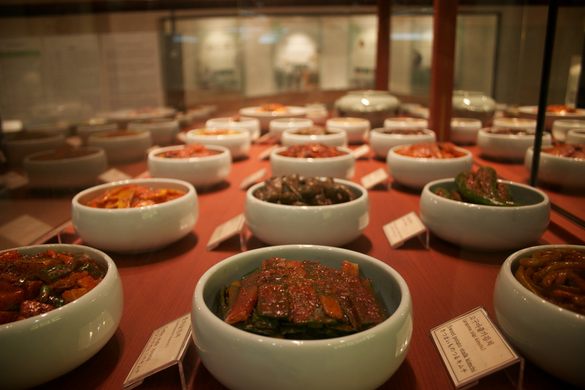"In 1988, when the top international athletes were competing for medals at the Seoul Olympics in South Korea, a new star was introduced to the world, one that had nothing to do with sport. It was the first time kimchi, a spicy fermented cabbage dish, was experienced by such a wide variety of people. This marked the start of kimchi’s global journey. Now the dish, which is a traditional staple of both North and South Korea, can be seen on menus around the world. During the 1988 Olympics, visitors who tasted the dish and wanted to know more visited the Kimchi Museum, which opened in 1986 and had been moved to the Korea World Trade Center Complex for the event. This institution was later revamped and opened its doors as the Museum Kimchikan in 2015. Now, the museum showcases the 1,500-year-history of kimchi, the production of which is traditionally a community affair. Every fall, families gather to blend the chopped vegetables with spices and stock up for the winter ahead. The process is known as kimjang and this collaborative tradition was recognized in 2013 by UNESCO as a piece of intangible cultural heritage. The most well-known version consists of Napa cabbage, scallions, and chili and garlic powders. A wide variety of vegetables and seafood is used in the nearly 180 regional forms of the dish. At the Museum Kimchikan, visitors can view the production technique, which uses lactobacillus bacteria, under a microscope. They can also watch documentaries about the history of kimjang, and how the country’s most prominent families made kimchi. Most importantly, visitors are invited to sample the different varieties." - ATLAS_OBSCURA



